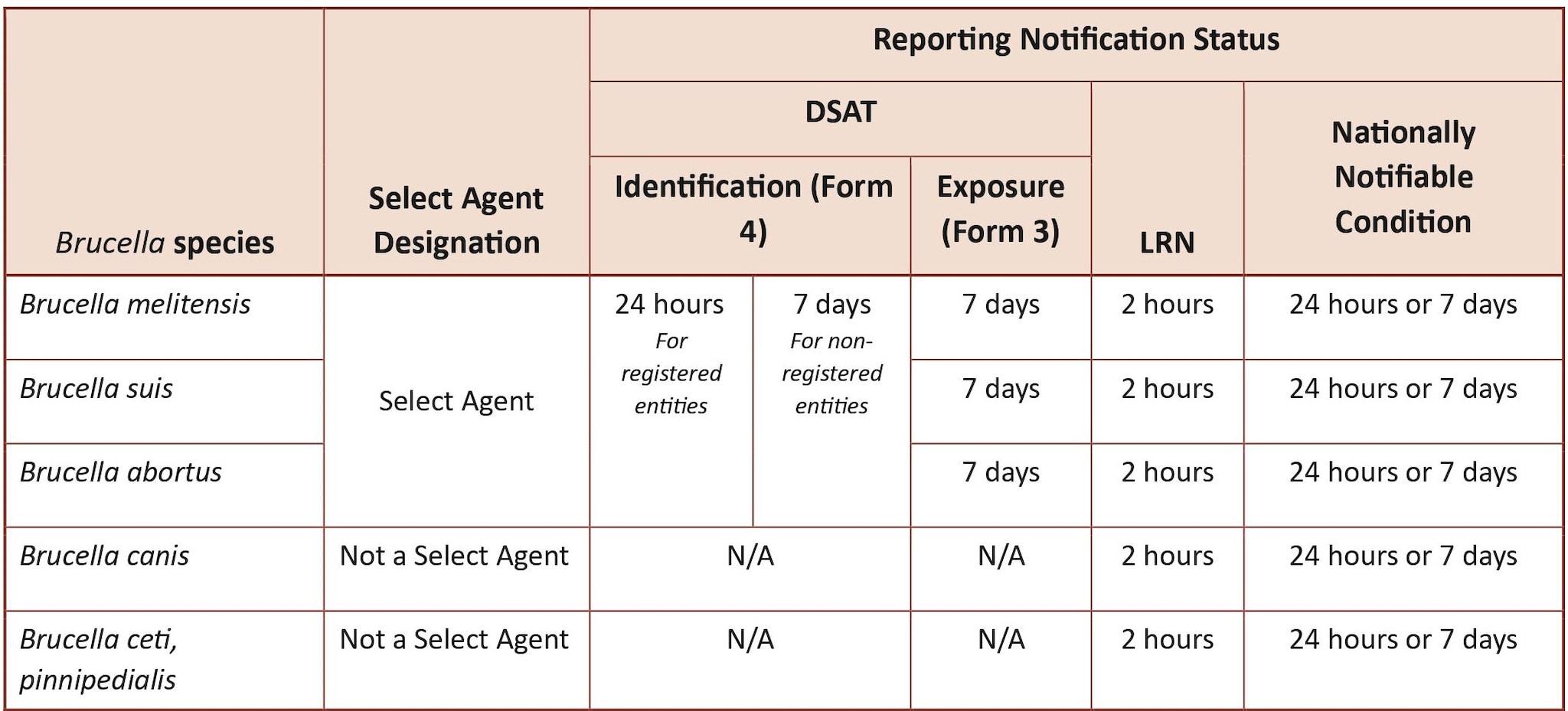Key points
Brucellosis is a reportable condition in all states and territories. Brucellosis cases must be reported to jurisdictions when identified by a healthcare provider, hospital, or laboratory. Brucellosis also is a nationally notifiable condition, and CDC publishes weekly and annual surveillance data in the Notifiable Infectious Disease Data Tables.

Brucellosis case definition
The brucellosis surveillance case definition provides a set of consistent criteria used to define the disease for public health surveillance and reporting. Surveillance case definitions enable public health officials to classify and count cases consistently across reporting jurisdictions. Surveillance case definitions are not intended to be used by healthcare providers for making a clinical diagnosis or determining how to meet an individual patient’s health needs.
Classic vs. new Brucella species
In 2020, all Ochrobactrum species were reclassified into the Brucella genus. This change in nomenclature has been reflected in many of the rapid microbial identification systems used in clinical laboratories. Infection with these new Brucella species does not cause brucellosis. Because these species are not select agents, the laboratory, clinical, and public health management and recommendations differ from those historically part of the Brucella genus.
CDC surveillance data
CDC brucellosis weekly and annual surveillance data are published in the NNDSS notifiable infectious disease data tables
Case reporting and national notification
Brucellosis is a reportable condition in all states and territories. Brucellosis cases must be reported to jurisdictions when identified by a healthcare provider, hospital, or laboratory. Specific reporting requirements may vary by jurisdiction.
Case Notification
In 2010, the Council of State and Territorial Epidemiologists (CSTE) designated brucellosis as a nationally notifiable condition (NNC). If a patient meets probable or confirmed case criteria, CSTE requests that general information about the patient and disease be submitted to NNDSS using NETSS messages or the generic message mapping guide.

You may also report brucellosis directly to the CDC using the Brucellosis Case Report Form that can be completed electronically or printed and filled by hand. Completed forms can be emailed or faxed to CDC. State health departments can directly report cases via DCIPHER through SAMS credentialing.
To request DCIPHER access, for more information about the system, or if there are other surveillance-related questions, contact BSPB at bspb@cdc.gov.
